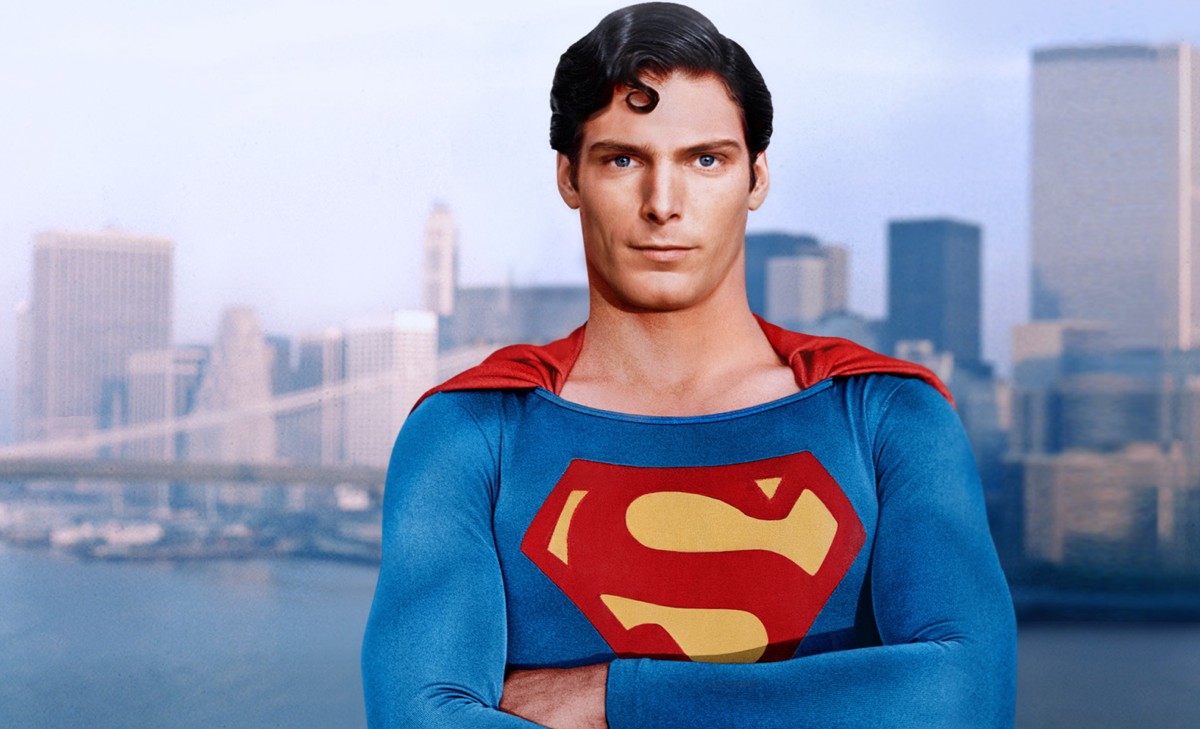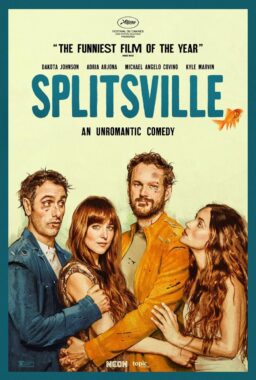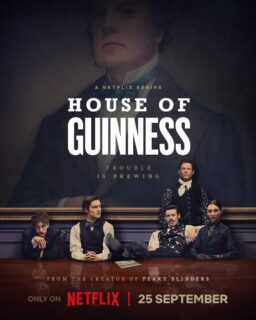In 1966, “It’s A Bird, It’s A Plane…It’s Superman!” opened on Broadway. The show is a mixture of classic craftsmanship (the score is by “Bye Bye Birdie” composers Charles Strouse and Richard Adams; its yearning string sections and bright melodies suggest the seeds of Strouse’s other comic adaptation, “Annie“) and new technique (director Harold Prince transformed the stage into a comic book page by dividing it into boxes, as he would four years later in “Company”). “It’s a Bird…”‘s blend of earnest romanticism and witty satire was misread as camp in the wake of the “Batman” television show, and the decision to market the show to kids kept older audiences away. Despite Tony nominations and the presence of Linda Lavin, “It’s a Bird…” closed in four months.

The musical’s script was written by two Esquire staffers, Robert Benton and David Newman, at the behest of Strouse and Adams, who’d enjoyed the “Dubious Distinction Awards” Benton and Newman invented for the magazine. Strouse and Adams’ score has a fullness that teases but never punctures Superman’s status as a icon of good; it’s left to Benton and Newman (in tandem with Prince’s pop art designs) to flatten the superheroics by making the show’s supporting cast more important than the title character: rather than a Superman story, it’s a look at how everyone in Metropolis sees him. It riffs on iconography in a style the writers had described in a piece for Esquire two years earlier: “The New Sentimentality” celebrated a new attitude of “Style Over Content” that rejected older values of “Patriotism, Love, Religion, Mom, The Girl.”
The next year, Benton and Newman’s “Bonnie and Clyde” opened in New York, and its commercial path was the opposite of “It’s A Bird…”: slow returns and early closings were turned around by media coverage that recognized in the intentionally unstable blend of violence, humor, sex and formal play as the influence of the French New Wave. It’s a triumph for the screenwriters, who pitched it for years before it finally got made (Strouse composed the film’s score).
A decade later, these two threads of their career came together in “Superman.” Benton and Newman (and Newman’s wife Leslie) were hired to rework Mario Puzo’s screenplay, wiping out subplots and hokey jokes and injecting a more self-referential humor (enhanced by writer Tom Mankiewicz, who took a “creative consultant” credit similar to the one Robert Towne took on Clyde). On one level, “Superman” is a blockbuster pitched to kids and older comic book readers: but its talent, its tone, and its sly referencing of movie and comics history makes it an end-of-the-70s repository of New Hollywood. According to Larry Tye’s Superman: The High-Flying History of America’s Most Enduring Hero, Benton started with a simple blend of the iconic and the everyday: “Is he Clark Kent until that emergency call happens, or is he Superman? Does he miss going full tilt or does he get used to being this guy who sits in a coffee shop and has a grilled cheese sandwich for lunch?” While Mankiewicz’s rewrites would replace some of that with a more straightforward grandeur, this initial question still lies at the heart of the film.
The involvement of Benton and Newman, the casting of Gene Hackman and Margot Kidder, and the initial work of Puzo all bear the traces of the previous decade of revisionism; so does the long list of directors considered for the film (including Francis Ford Coppola, Steven Spielberg and Sam Peckinpah) and the even longer list of potential Supermen (Robert Redford, Christopher Walken, and Warren Beatty, who, according to Glen Weldon’s fun new “biography” of Superman, felt he looked ridiculous in the tights). New Hollywood used older genres in new ways in order to say something about contemporary life, so what better vehicle than “the Big Blue Boy Scout”?
“Bonnie and Clyde” begins with the a sepia-toned Warner Brothers shield, before fading to black as a slide projector’s hum and click takes over the soundtrack: snapshots of the real Bonnie and Clyde are shown on the screen, intercut with the film’s credits, until we see two sepia pictures of Warren Beatty and Faye Dunaway in character, as the details of Bonnie and Clyde’s life are described in sidebar. It’s a skillful merger of real and fake that leads into the movie’s outlaws-as-media-stars metaphor.
“Superman” foregrounds its artificiality: the Warners logo gives way to a curtain opening in front of a movie screen. “June 1938” is projected, and then the cover of Action Comics #1. A boy’s voice reads the comic’s captions, which describe the Daily Planet as a beacon of “clarity and truth.” This sentiment gains visual weight as the image transforms from a drawing to a photographic image of the Planet, as the camera moves upward into the heavens, and the film’s space-set credits. Even as the “S” shield appears on the screen, everything about the sequence says, “We know you know this is fantasy. But trust us to make it real.” “Bonnie and Clyde” was a deconstruction of gangster films that heralded a more critical cinema, using fresh techniques to transform real people into symbols of movie history; “Superman” is that movement’s reversal, tweaking genre rather than dissecting it, in an attempt to humanize a literally flat character. One ends in a ballet of bullets, while the other turns back the earth to guarantee a happy ending.

Bonnie and Clyde are an inverted screwball couple, commenting on historical memory through dark romance. The first shot of Bonnie is a surreal close-up on bright red lips, as her face turns to look in a smudged mirror; a series of cuts and zooms takes a bored, naked Bonnie to the window, where she sees Clyde hotwiring a car. Getting dressed and running outside, she confronts him, beginning a playful dialogue that uses ’30s banter to elucidate Bonnie’s desperation and Clyde’s insecurity. They wander through the dusty town, until Bonnie dares Clyde to show what kind of criminal he claims to be; Clyde grins, runs into a general store, and seconds later emerges with a wad of cash. They steal a car, introduce themselves to one another, and take off on a gleeful ride that’s barely coded as sexual release, until a chagrined Clyde halts everything by admitting he’s “not much of a lover boy.”
Superman’s first proper meeting with Lois is an interview on the deck of her penthouse apartment. Once again, a young woman is waiting restlessly when a mysterious stranger arrives, but the banter here is lighter and funnier than in Clyde, an expression of romantic confusion rather than unformed longing; it reflects not only ’30s comedy but the ’70s pastiches of Benton and Newman’s friend Peter Bogdanovich. Where Bonnie is drawn to Clyde’s fake bravado and danger, Lois is flummoxed by Superman’s goodness, perhaps a commentary on New Hollywood’s cynicism in the face an icon of the Old Sentimentality. These tensions are resolved by taking a ride, but here it is sweet flight rather than the wild release of a getaway. Superman and Lois are aligned with the law, even as their dynamic echoes Clyde’s inversion of traditional gender roles (Clark has to “pretend” the impotence that Clyde suffers from) and insistence on shaping the relationship around professionalism (as with “Bonnie and Clyde”‘s robberies, Lois and Superman’s relationship is defined through movie action).
Their romance finds its ironic twin in Hackman’s Luthor and Valerie Perrine’s Miss Tessmacher, exchanging barbs in sunken lair beneath Metropolis, as if Buck Barrow had set up a forty-year crime empire. Luthor manipulates Tessmacher’s guarded romantic yearnings in order to further his evil schemes (he’s a stand-in for how the film deftly feeds fan desire in order to generate its narrative). These couples become the movie’s linchpin for satiric play, targeting everything from Superman’s costume to Lex’s hair to secret identities, while still believing in the mythologies of heroism and sacrifice that a blockbuster requires. Bonnie and Clyde were Benton and Newman’s version of Jean-Paul Belmondo and Jean Seberg in “Breathless,” and stylistic intention as much as historical record demanded their deaths; “Superman” is no less sophisticated, but market forces and the tenor of the times meant its heart was with Tessmacher when she removes Superman’s Kryptonite chains: “Why is it I can’t get it on with the good guys?”
Superman is born in the era of Clyde Barrow, and is a similar outlaw hero in his initial iteration. But his gift — the reason he’s both survived for 75 years and been harder to conceptualize than Batman or Spider-Man — is how broadly he can be defined, how different generations can use him as a canvas on which to map various creative or cultural concerns. As “Man Of Steel” offers a “grittier” hero, it’s worth looking back to the first Superman, whose blend of New and Old Sentimentalities offered a balance between seriousness and sophisticated humor, deconstruction and lyrical flight. It reminds us that it’s not so much whether we’ll “believe a man can fly,” but that we should want to believe in the first place.












